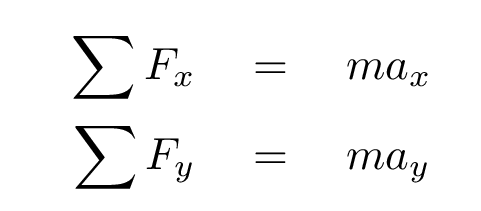 Copyright © Michael Richmond.
This work is licensed under a Creative Commons License.
Copyright © Michael Richmond.
This work is licensed under a Creative Commons License.
Brief review of forces and work
Time for a look back at the material we've covered so far.
In brief, we've discussed two different approaches
to solving physics problems:
- using forces, which includes 1-D kinematics
- using energy, which includes work
- when using forces ...
- one must identify the forces acting on an object,
in order to compute its acceleration,
and thus its changes in velocity and acceleration.
The typical approach is
- draw a free-body diagram
- choose a set of coordinate axes
- determine the sum of all forces acting in both X and Y directions
- compute the acceleration of the object in each direction

- if the accelerations are constant,
apply the 1-D kinematic equations
- when using energy ...
- figure out which forces are conservative, and which
are not. Compare the initial total energy
of all objects in the system to the final total energy.
A typical approach is
- draw a picture showing the "initial" and "final" states
- list all the forces which act during the motion
- compute the total energy of the system in the "initial" state
- compute the total energy of the system in the "final" state
- account for the loss of any energy due to friction or
other non-conservative forces
- apply the law of conservation of energy
(in the form below, note that the work done by friction
or other non-conservative forces is NEGATIVE)

 Copyright © Michael Richmond.
This work is licensed under a Creative Commons License.
Copyright © Michael Richmond.
This work is licensed under a Creative Commons License.


 Copyright © Michael Richmond.
This work is licensed under a Creative Commons License.
Copyright © Michael Richmond.
This work is licensed under a Creative Commons License.